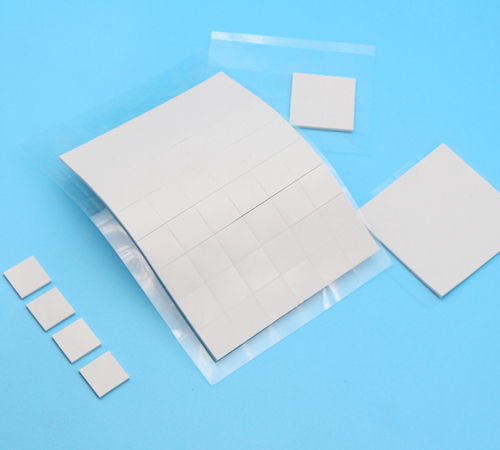With the increasing global focus on environmental protection and energy efficiency, new energy vehicles (NEVs) have emerged as a key direction for the future of transportation. The widespread adoption of NEVs requires not only breakthroughs in battery technology and drive systems but also effective solutions for vehicle thermal management. A well-designed thermal management system plays a critical role in NEVs, influencing vehicle performance, safety, driving range, and longevity.
The Importance and Challenges of NEV Thermal Management
The primary task of a thermal management system in NEVs is to maintain the optimal operating temperature range for the power battery, drive motor, and electronic control systems. A suitable thermal environment significantly enhances the efficiency and lifespan of these core components, preventing performance degradation or safety risks caused by overheating or overcooling.
● Power Battery Thermal Management: As the core component of NEVs, the power battery's operating temperature directly impacts its energy density, charging and discharging efficiency, and lifespan. Extreme temperatures, either too high or too low, can lead to a reduction in battery performance or even cause safety incidents.
● Drive Motor Thermal Management: The drive motor generates substantial heat during operation. Without proper heat dissipation, elevated temperatures can lower motor efficiency and increase the risk of burnout.
● Electronic Control System Thermal Management: This system includes components such as inverters and DC/DC converters, which require effective thermal management to ensure the vehicle’s control precision and reliability.
Principles of NEV Thermal Management
To ensure the efficient operation of NEV thermal management systems, several key principles must be adhered to:
● Efficient Heat Dissipation: Advanced heat dissipation materials and technologies should be employed to ensure components can effectively disperse heat and maintain stable operating temperatures.
● Precise Temperature Control: Smart temperature control systems must be implemented to monitor and adjust component temperatures in real-time, ensuring optimal operating conditions.
● Energy Recovery: The thermal management system should recover as much waste heat as possible, converting it into usable energy for other parts of the vehicle, thus improving overall efficiency.
● Lightweight Design: The system should be designed to minimize weight while maintaining heat dissipation efficiency, helping to reduce overall vehicle energy consumption.
Key Technologies in NEV Thermal Management
The advancement of NEV thermal management relies on several key technologies:
● Liquid Cooling Technology: Liquid cooling is the most commonly used solution for battery thermal management. By circulating liquid coolant between battery modules, heat generated during operation is effectively dissipated. This technology offers high heat dissipation efficiency and precise temperature control.
● Heat Pump System: Heat pumps are widely used in NEVs for cabin air conditioning and battery thermal management. These systems can provide both cooling in summer and heating in winter, with better efficiency than traditional air conditioning systems.
● Phase Change Materials: These materials can absorb or release large amounts of heat at specific temperatures, making them effective for stabilizing battery temperature. They are commonly used within battery modules to act as thermal buffers.
● Smart Temperature Control Systems: Equipped with sensors and advanced control algorithms, these systems monitor the temperature of vehicle components in real-time and automatically adjust thermal management measures to ensure optimal operation.
Future Trends and Development Prospects
As NEV technology continues to evolve, thermal management solutions are constantly being optimized. The following trends will shape the future of NEV thermal management:
● Integrated Design: Integrating thermal management systems for the battery, drive motor, and electronic control systems can improve overall efficiency and enable seamless operation.
● Intelligent and Automated Systems: Artificial intelligence (AI) and big data will be increasingly used to improve the intelligence and efficiency of temperature management systems, resulting in more precise and effective temperature control.
● New Material Applications: Research and development of new heat dissipation materials, such as nanomaterials, will enhance the performance of thermal management systems.
● Waste Heat Utilization: Enhancing technologies that convert waste heat generated during thermal management into usable energy for other vehicle components will further improve overall vehicle efficiency.
Nfion Technology’s Thermal Solutions for NEVs
Material selection and application are crucial in the NEV thermal management sector. Nfion Technology is a leading provider of high-performance thermal management materials for NEVs, offering cutting-edge thermal silicone pad solutions. These materials are known for their high heat dissipation efficiency, durability, and ease of application. They are widely used in the thermal management of NEV batteries, drive motors, and electronic control systems. By providing superior products and expert technical services, Nfion Technology is contributing to the sustainable development of the NEV industry.
Thermal Silicone Pad Design Principles and Objectives
The primary criteria for selecting thermal silicone pads for NEV thermal management systems are the material's thermal conductivity and stability, which directly impact the heat dissipation efficiency and service life of the battery, drive motor, and electronic control system.
The objective is to design thermal pads that enable efficient heat transfer, reduce operating temperatures, and improve the efficiency and lifespan of key components. These pads must also tightly bond with the battery, drive motor, and electronic control system to prevent heat loss.
Application Strategies for Thermal Silicone Pads
In practical applications, the appropriate type and thickness of thermal silicone pads are selected based on the specific structure and operating environment of the NEV components. This ensures that the expected heat dissipation effects are achieved under varying conditions.
Selection Criteria and Standards for Thermal Silicone Pads
● Thermal Conductivity: The thermal conductivity of silicone pads is a critical selection criterion, as it directly impacts the heat dissipation efficiency and the performance stability of the vehicle’s components.
● Temperature Resistance: This is a key factor for ensuring that the silicone pads can work effectively in high-temperature environments, which is essential for the safe operation of the battery, drive motor, and electronic control system.
● Thickness and Flexibility: The thickness and flexibility of the silicone pad affect the design and assembly process of the vehicle’s systems, and should be selected according to specific requirements.
Physical Characteristics and Advantages of Thermal Silicone Pads
● High Thermal Conductivity: The silicone pads effectively transfer heat, ensuring that critical components stay within a safe temperature range.
● Flexibility and Compressibility: These characteristics allow the silicone pads to fill uneven surfaces, ensuring complete contact and efficient heat transfer.
● High and Low-Temperature Resistance: The silicone pads maintain performance across a wide range of temperatures, adapting to various NEV operating environments.
● Electrical Insulation: Excellent electrical insulation properties ensure safe usage with batteries, drive motors, and electronic control systems.
● Durability and Aging Resistance: The pads are highly durable and resistant to aging, ensuring long-term reliability.
Application Benefits
● Improved Heat Management Efficiency: The high thermal conductivity and superior contact performance of the silicone pads enable efficient heat transfer, preventing overheating and ensuring system stability.
● Enhanced System Reliability: Effective heat dissipation reduces thermal stress and temperature fluctuations, improving the reliability of batteries and electronic components.
● Simplified Installation and Maintenance: The flexibility and compressibility of silicone pads simplify installation, eliminating the need for complex fixing mechanisms and reducing maintenance costs.
● Lightweight Design: The lightweight nature of silicone pads helps reduce overall vehicle weight, improving energy efficiency and driving range.
● Safety and Environmental Compliance: The silicone pads are environmentally friendly, non-toxic, and compliant with NEV industry safety and environmental standards.
● Cost-Effectiveness: By extending the service life of critical components and reducing maintenance requirements, thermal silicone pads lower the total cost of ownership for NEVs.
Conclusion
Thermal management is a crucial factor in ensuring the performance, safety, and longevity of new energy vehicles. By implementing efficient thermal management solutions, NEVs can significantly enhance their market competitiveness and user experience. As technology advances, NEV thermal management systems will become increasingly efficient, intelligent, and integrated, providing a strong foundation for the development of green and intelligent transportation. Nfion Technology will continue to innovate and lead the industry in providing advanced material solutions for NEV thermal management systems.
 CN >
CN >



